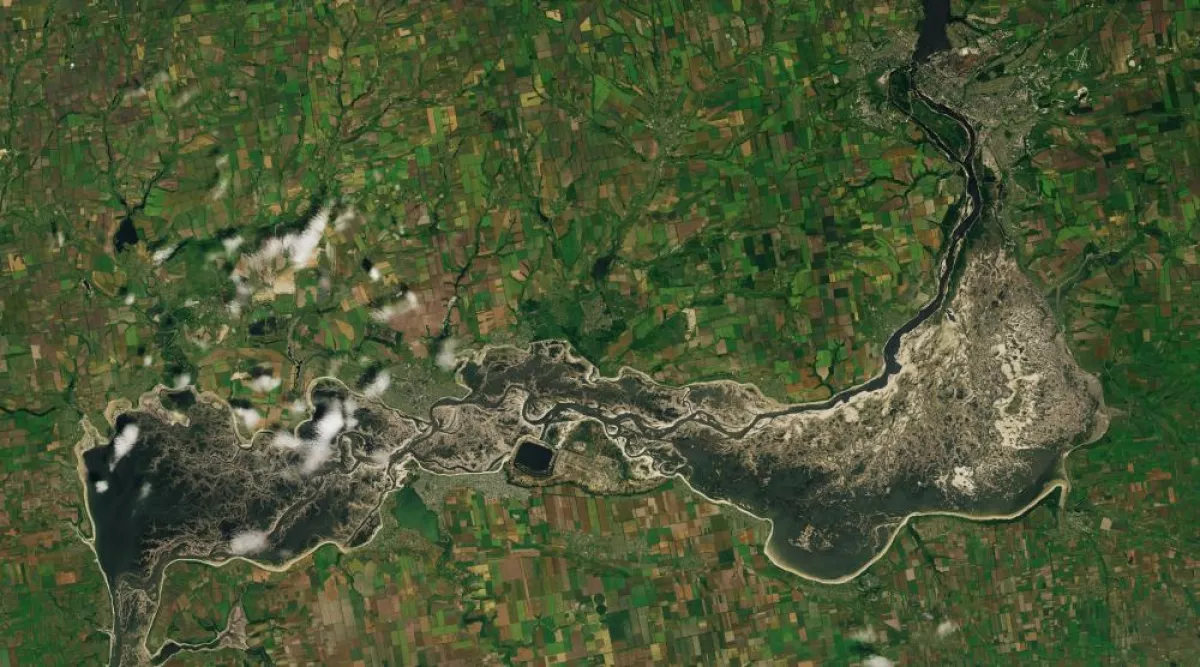How blown-up dam sparked rare ecological rebirth in Ukraine Feature story by The Guardian
In a haunting paradox of war, destruction has become the unlikely catalyst for ecological revival along Ukraine’s lower Dnipro River. As detailed in a recent Guardian feature, the 2023 collapse of the Russian-occupied Nova Kakhovka dam— widely seen as an act of war— has triggered not only human tragedy but also one of the most dramatic instances of spontaneous environmental regeneration in Europe’s recent memory.
What has emerged from the drained Kakhovka Reservoir is not just bare earth, but a living, evolving mosaic of wetlands, meadows, and riparian forest that echoes Ukraine’s mythic past. The area, once known as Velykyi Luh or “the Great Meadow,” had been submerged for nearly 70 years. Now, it is returning.
“It is an ancient, mythic terrain, woven through Ukrainian folklore,” says Valeriy Babko, a retired history teacher and veteran. “Think of all those Cossacks galloping through its valleys of forests so dense the sun barely pierced them.”

The transformation is dramatic and swift. Satellite imagery, ecological reports, and on-the-ground observations confirm the rise of a new forest of willow and poplar, the resurgence of endangered species like the sturgeon, and the rapid return of wildlife. Scientists believe this could evolve into the largest floodplain forest in Ukraine’s steppe zone.
“We are witnessing the emergence of a massive natural floodplain forest system,” explains Oleksiy Vasyliuk, head of the Ukrainian Nature Conservation Group. “It is not a managed project. It is the land itself returning to life.”
The ecological implications are continental. A 2025 report by the Ukrainian War Environmental Consequences Work Group (UWEC) estimated that as many as 40 billion tree seeds have sprouted, signaling a large-scale spontaneous rewilding. International experts, such as Eugene Simonov of Rivers without Boundaries, see the unfolding events as rare and globally relevant.
“Restoring natural freshwater ecosystems along a 250-km stretch of the lower Dnipro could be the largest project of its kind in Europe,” Simonov notes. He adds that it could be Ukraine’s “decisive contribution” to the EU’s environmental goals.
But the resurgence is shadowed by the toxic legacy of the reservoir. When the dam broke, over 1.5 cubic kilometers of sediment containing heavy metals and industrial pollutants were released. That sludge now threatens to contaminate soils, water, and food webs. Freshwater ecologist Oleksandra Shumilova offers a stark warning:
“All these pollutants were absorbed into these fine particles that were deposited on the bottom... like an enormous sponge... When the dam was drained it sent an enormous quantity of polluted, potentially toxic waste flowing into the wider area.”
“Even in small concentrations, they can have negative effects on virus systems of human organisms... cancer, endocrine disruptions, problems with lungs, with kidneys.”
The long-term effects remain largely unknown, as scientists cannot access large parts of the site due to mines and ongoing shelling. Yet, in a paper co-authored by Shumilova and published in Science, the outlook for biodiversity remains cautiously hopeful: 80% of lost ecosystem functions could be restored within five years if the current regeneration continues.
Still, political uncertainty looms. Ukraine’s state hydro company, Ukrhydroenergo, has expressed intentions to rebuild the dam—a move that environmentalists say would undo the entire natural recovery.
“Rebuilding the dam the way it was would not be a recovery,” Vasyliuk says. “It would be an ecocide. It would destroy a young, spontaneous forest before we even have a chance to understand it.”
The site, much of which lies in protected zones under the Emerald Network, is a symbol of what Ukraine could offer Europe—not only in ecological resilience but in postwar vision. The UWEC report urges policymakers to recognize the moment as a rare, strategic opportunity.
“This is our biocultural sovereignty at stake,” Vasyliuk concludes. “That means our nature, our identity, our independence, and a symbol of the kind of nation we want to become.”
What began as a wartime disaster may yet become one of Europe’s great ecological experiments.
The question now is whether Ukraine will choose to preserve this unintentional gift of nature—or drown it again in pursuit of old paradigms.
By Sabina Mammadli








